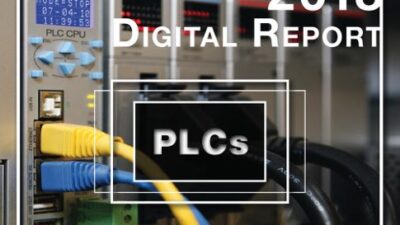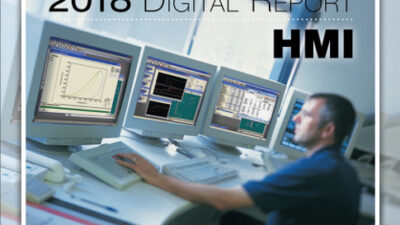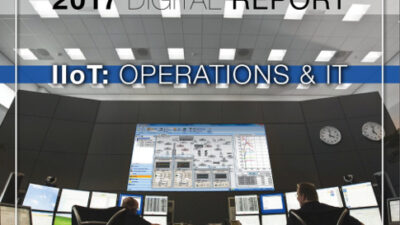ABB Inc. Automation Technologies has now introduced the full power range of its multidrive ACS800 family—1-7,000 hp (at 380-690 V ac input)—to North American end-users.
Features of ACS800 also include: Direct Torque Control, ABB’s proprietary motor control that eliminates the need for encoders in most applications; I/O extensions, fieldbuses, and a pulse encoder module all fitting inside inverters; and Start-up Assistant and Adaptive Programming interactive tools for more savings in commissioning time/cost
ABB Inc. Automation Technologies has now introduced the full power range of its multidrive ACS800 family—1-7,000 hp (at 380-690 V ac input)—to North American end-users. Intended for close coordination of multiple motors, this highly modular adjustable-speed drive family was first introduced in Europe, then offered here in a lower power range earlier in 2004. A key attraction of ACS800 multidrive is use of multiple drive modules (inverters) connected to a common dc bus bar that supplies the modules with dc power coming from a single built-in rectifier unit.
A standard dc bus also allows one power entry point and common braking resources for several drives. Modular construction is another important element of ACS800. Benefits include simpler total installation with savings in cabling, maintenance, and cabinet space; reduced line currents and simpler braking arrangements; and lower component counts, says ABB. As previously reported in Control Engineering , modular design of ACS800 has reduced drive footprint by up to 50%, compared to the previous generation product.
Jari Tukia, product manager for multidrives at ABB Drives, cites typical applications of these drives. In a paper machine, many motors must be individually controlled as a complete system; here, ACS800 drive modules offer fast communication of torque and speed signals among drives, controlling tension in the paper web, he explains. Multidrives also work where individual drive motors are not tightly coupled. In a sugar centrifuge application, for example, each drive module can be programmed with a speed profile so that overall energy usage from the grid is minimized.
Drive set-up and control are said to be quick and simple. Three-phase power cabling, wired to a rectifier module (starting at 200 hp rated units), uses a novel plug-in connector. Motor cabling connects to plug-in connectors, which project inside the multidrive cabinet for easy access by personnel doing the wiring. Rectifier and inverter modules each come with wheels, for ease of rolling into (and out of) the cabinet, to seat modules into the connectors, and also for maintenance.
Seven frame sizes of inverter modules (R2i to R8i) cover the entire ACS800 power range. Above 150 hp, different configurations of R8i frame-size units are added in single or parallel configurations (depending on power requirements) to satisfy output current needs of any application.
Some standard features/benefits of ACS800 are unavailable in previous generation ABB drives, or in competitors’ drives, according to the company. For example, parallel-connected inverter modules provide built-in redundancy for higher drive availability, because each module is a complete three-phase inverter. This allows the drive to run with partial load if one module fails in a parallel connection.
—Frank J. Bartos, executive editor, Control Engineering, [email protected]


